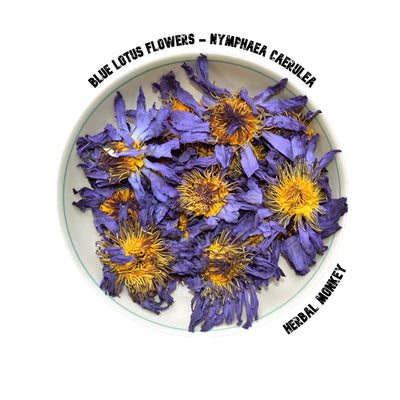
Discover the beauty and symbolism of the Blue Lotus Flower in the UK.
The Blue Lotus Flower holds great significance and symbolism in various cultures around the world. It is often associated with spirituality, purity, and enlightenment. The colour blue represents tranquillity and calmness, while the lotus flower symbolizes beauty, rebirth, and growth.
In ancient Egyptian mythology, the Blue Lotus Flower was considered sacred and was associated with the sun god Ra and the goddess of love, Hathor. It was believed to have healing properties and was used in religious rituals and ceremonies.
In Hinduism and Buddhism, the Blue Lotus Flower is considered a symbol of purity of body, speech, and mind. It is often depicted in art and is believed to represent enlightenment and spiritual awakening.
The Blue Lotus Flower also has medicinal properties and is used in traditional herbal medicine for its calming and relaxing effects. It is known to promote a sense of tranquillity and relieve stress and anxiety.
Overall, the Blue Lotus Flower is a powerful symbol of beauty, spirituality, and growth, and its presence in the UK adds a touch of serenity and elegance to any environment.
Although native to Egypt and other parts of Asia, Blue Lotus Flowers can be successfully cultivated and grown in the UK. The flowers require a warm and sunny climate to thrive, so it is important to create the right conditions for their growth.
Blue Lotus Flowers can be grown in containers or in ponds, as they prefer shallow water. The soil should be rich in nutrients and well-drained. Regular watering is necessary to keep the soil moist, but excessive water should be avoided to prevent root rot.
The flowers bloom during the summer months and require regular fertilization to promote healthy growth. It is important to protect the plants from frost during the winter season.
If you're interested in cultivating Blue Lotus Flowers in the UK, it is recommended to consult with local gardening experts or join online forums to learn more about the specific requirements and best practices.
Blue Lotus Flowers offer various benefits and have been used for different purposes throughout history. Here are some of the notable benefits and uses of Blue Lotus Flowers:
- Relaxation and Stress Relief: The flowers have natural sedative properties and can help promote relaxation and alleviate stress and anxiety.
- Sleep Aid: Blue Lotus Flowers are known for their calming effects and can be used as a natural sleep aid. They can help improve the quality of sleep and promote a sense of tranquillity.
- Mood Enhancement: The flowers have mood-lifting properties and can help improve overall well-being. They are often used to enhance mood and promote a positive mindset.
- Meditation Aid: Blue Lotus Flowers have been used in meditation practices for centuries. They are believed to enhance spiritual experiences and facilitate deep relaxation and concentration.
- Skin Care: Blue Lotus Flowers contain antioxidants and anti-inflammatory compounds that can benefit the skin. They are often used in skincare products to promote a healthy complexion and reduce signs of aging.
These are just a few examples of the many benefits and uses of Blue Lotus Flowers. Their versatility and natural properties make them a popular choice in various wellness and beauty practices.
The Blue Lotus Flower has been a prominent symbol in art and culture for centuries. Its vibrant blue colour and graceful form make it a popular subject for paintings, sculptures, and other artistic expressions.
In ancient Egyptian art, the Blue Lotus Flower was often depicted in hieroglyphics, tomb paintings, and temple carvings. It was associated with the afterlife and was believed to provide protection and guidance to the deceased.
In Hindu and Buddhist art, the Blue Lotus Flower is often depicted as a sacred symbol. It is commonly seen in paintings, statues, and mandalas, representing spiritual enlightenment and transcendence.
The Blue Lotus Flower has also inspired poets, writers, and musicians. Its beauty and symbolism have been praised in numerous works of literature and songs, capturing its essence and significance in human culture.
Today, the Blue Lotus Flower continues to inspire artists and is cherished for its aesthetic appeal and deep spiritual meaning.
If you are interested in experiencing the beauty of Blue Lotus Flowers in the UK, there are several places where you can find them:
- Botanical Gardens: Many botanical gardens across the UK feature dedicated sections for water plants and exotic flowers, including Blue Lotus Flowers. These gardens provide a serene and picturesque environment to admire these enchanting blooms.
- Nurseries and Garden Centres: Some nurseries and garden centres specialize in aquatic plants and offer a variety of water flowers, including Blue Lotus Flowers. You can visit these establishments to purchase Blue Lotus plants for your own garden or pond.
- Online Retailers: There are several online retailers that specialize in selling aquatic plants and flowers. They offer a wide range of options, including Blue Lotus Flowers, and deliver them directly to your doorstep.
When visiting these locations or making online purchases, it is important to ensure that the plants are sourced ethically and sustainably. This helps support responsible cultivation practices and protects the natural habitat of these beautiful flowers.
So, whether you're a nature enthusiast, a gardening enthusiast, or simply someone who appreciates the beauty of flowers, don't miss the opportunity to witness the elegance and charm of Blue Lotus Flowers in the UK.
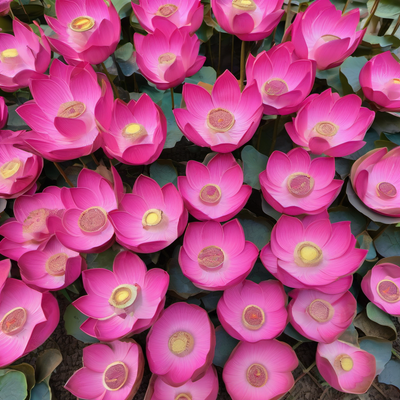
Discover the beauty and symbolism of the pink lotus flower in this captivating blog post.
The lotus flower is a powerful symbol in many cultures and religions. It is often associated with purity, enlightenment, and rebirth. The lotus grows in muddy waters, yet it blooms beautifully and untainted by its surroundings. This represents the ability to rise above adversity and find inner peace and enlightenment.
In Buddhism, the lotus is considered a sacred flower and is often depicted in artwork and sculptures. It symbolizes the journey of the soul from darkness to light, and the path to enlightenment. The lotus also represents the purity of body, speech, and mind.
In Hinduism, the lotus is associated with several deities, including Vishnu, Lakshmi, and Saraswati. It is considered a symbol of divine beauty, purity, and grace. The lotus is often depicted as a seat for gods and goddesses, emphasizing its importance and significance in Hindu culture.
The lotus flower is also a common symbol in Egyptian mythology. It is associated with the sun, creation, and rebirth. The lotus was believed to emerge from the primordial waters of chaos and give birth to the sun god, Ra. It represents the cycle of life, death, and rebirth.
Overall, the lotus flower carries deep symbolism and meaning in various cultures. Its beauty and resilience serve as a reminder to embrace life's challenges and find inner peace and enlightenment.
The pink lotus is a special variation of the lotus flower that holds its own meaning and significance. It is often associated with love, compassion, and beauty. The pink color represents femininity, grace, and tenderness.
In Buddhism, the pink lotus is believed to symbolize the highest level of spiritual attainment. It represents the enlightened mind and the purity of the heart. The pink lotus is often depicted in artwork and statues of enlightened beings, such as the Buddha or Bodhisattvas.
In Hinduism, the pink lotus is associated with the goddess Lakshmi, who is the goddess of wealth, prosperity, and beauty. It is believed that the pink lotus blooms wherever Lakshmi resides, symbolizing her blessings and abundance.
The pink lotus is also seen as a symbol of love and compassion in many cultures. It represents the unconditional love and kindness that one should strive to cultivate in their own lives.
Overall, the pink lotus holds a special place in the hearts of many, representing love, compassion, and spiritual enlightenment.
The cultural significance of the pink lotus varies across different regions and countries. In China, the pink lotus is associated with purity, harmony, and good fortune. It is often depicted in Chinese art and is considered a symbol of elegance and beauty.
In Japan, the pink lotus is known as the 'Sacred Lotus' and is associated with Buddhist teachings and enlightenment. It is often depicted in Japanese art and is considered a symbol of purity and spiritual awakening.
In India, the pink lotus is highly revered and is often associated with various Hindu deities, such as Lakshmi, Saraswati, and Ganesha. It is considered a symbol of divine beauty, grace, and prosperity.
In Egypt, the pink lotus is associated with the sun god, Ra, and is considered a symbol of creation and rebirth. It represents the cycle of life and the eternal nature of the soul.
Overall, the pink lotus holds cultural significance in various regions, representing purity, beauty, and spiritual enlightenment.
The pink lotus flower has been a popular subject in art and literature throughout history. It has been depicted in paintings, sculptures, poems, and stories, symbolizing various themes and ideas.
In Chinese art, the pink lotus is often portrayed in traditional ink paintings and is considered a symbol of purity, elegance, and feminine beauty. It is also a common motif in Chinese poetry, representing love, grace, and spiritual enlightenment.
In Indian art and literature, the pink lotus is often depicted as a divine flower, associated with gods and goddesses. It is a popular subject in Hindu mythology and is considered a symbol of beauty, grace, and purity.
In Buddhist art, the pink lotus is often depicted in paintings and sculptures of enlightened beings, such as the Buddha or Bodhisattvas. It represents the highest level of spiritual attainment and the purity of the heart.
Overall, the pink lotus flower has inspired and captivated artists and writers across different cultures, symbolizing beauty, spirituality, and the pursuit of enlightenment.
If you're interested in growing pink lotus flowers, here are some tips to help you get started:
1. Choose a suitable location: Pink lotus flowers thrive in full sun and prefer to be planted in shallow water, such as a pond or container. Make sure the location receives at least 6 hours of direct sunlight each day.
2. Prepare the soil: Pink lotus flowers prefer muddy or loamy soil. You can create a suitable planting bed by mixing clay, sand, and compost.
3. Plant the tubers: Pink lotus flowers are grown from tubers, which should be planted in the soil with the growing tips facing up. Make sure to cover the tubers with a layer of soil to protect them from birds or pests.
4. Provide adequate water: Pink lotus flowers need plenty of water to thrive. Keep the soil moist, but not waterlogged. You can use a hose or watering can to water the plants regularly.
5. Fertilize regularly: Pink lotus flowers benefit from regular fertilization. Use a slow-release fertilizer designed for aquatic plants, following the instructions on the package.
6. Prune and maintain: Remove any dead or yellowing leaves to promote healthy growth. You can also trim the stems to control the size and shape of the plant.
By following these tips, you can enjoy the beauty of pink lotus flowers in your own garden or water feature.
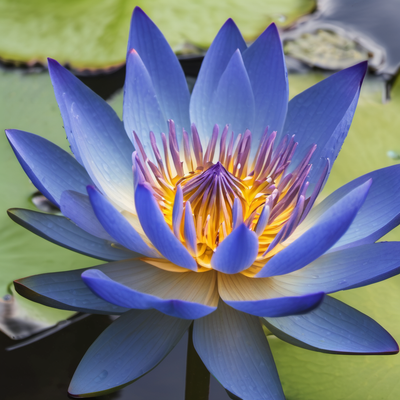
Discover the amazing benefits of incorporating Blue Lotus Flower Tincture into your daily routine.
Blue Lotus Flower Tincture has been used for centuries in ancient Egyptian and Indian cultures.
It is derived from the blue lotus flower, scientifically known as Nymphaea Caerulea.
The flower has a rich history and was highly regarded for its spiritual and medicinal properties.
It was often used in religious ceremonies and as a natural remedy for various ailments.
Today, Blue Lotus Flower Tincture is gaining popularity for its potential health benefits.
Blue Lotus Flower Tincture is believed to have a range of therapeutic properties.
It is known for its calming and relaxing effects, which can help reduce stress and anxiety.
It may also have analgesic properties, making it useful for relieving pain and inflammation.
Additionally, Blue Lotus Flower Tincture has been reported to have aphrodisiac properties and may enhance sexual experiences.
More research is needed to fully understand the therapeutic potential of Blue Lotus Flower Tincture.
Blue Lotus Flower Tincture can be used in various ways.
One common method is to mix a few drops of the tincture with water or juice and consume it orally.
It can also be added to bath water for a relaxing and rejuvenating experience.
Some people use Blue Lotus Flower Tincture topically by applying it directly to the skin.
It is important to follow the instructions on the product label and consult a healthcare professional for personalized guidance.
While Blue Lotus Flower Tincture is generally considered safe for most people, it may cause some side effects.
These can include mild gastrointestinal discomfort, such as nausea or stomach cramps.
In rare cases, allergic reactions may occur, so it is important to monitor for any signs of an allergic response.
As with any supplement or herbal product, it is recommended to start with a low dose and gradually increase as tolerated.
If any adverse reactions occur, it is best to discontinue use and consult a healthcare professional.
When choosing a Blue Lotus Flower Tincture product, it is important to consider the quality and purity of the product.
Look for products that are made from organic blue lotus flowers and do not contain any additives or fillers.
It is also beneficial to choose a product that has been third-party tested for quality and potency.
Reading customer reviews and consulting with a healthcare professional can also help guide your decision.
Remember, each person may respond differently to Blue Lotus Flower Tincture, so it may be helpful to try different products to find the one that works best for you.
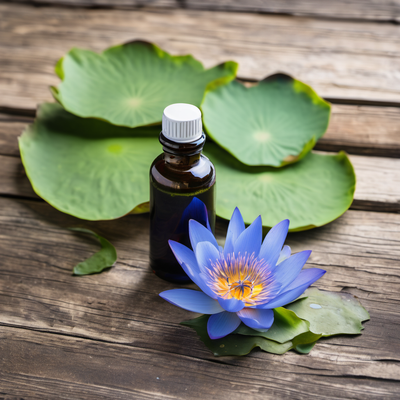
Discover the benefits of Blue Lotus Flower tincture and how it can be used as a herbal remedy.
Blue Lotus Flower, also known as Nymphaea Caerulea, is a water lily that has been used for centuries in traditional herbal medicine.
It is native to Egypt and other parts of East Africa, and its vibrant blue petals make it a popular choice for ornamental gardens.
In addition to its aesthetic appeal, Blue Lotus Flower is also valued for its potential therapeutic properties.
Blue Lotus Flower tincture offers a range of potential benefits for overall well-being and relaxation.
Some of the key benefits of using Blue Lotus Flower tincture include:
- Promoting a sense of calm and reducing anxiety
- Enhancing mood and promoting feelings of happiness
- Supporting healthy sleep patterns
- Providing natural stress relief
These benefits are attributed to the presence of various active compounds in Blue Lotus Flower, such as alkaloids and flavonoids.
Using Blue Lotus Flower tincture is simple and convenient.
Here are some recommended ways to incorporate it into your wellness routine:
- Dilute a few drops of Blue Lotus Flower tincture in a glass of water or juice and consume it orally.
- Add a few drops to your favourite herbal tea for a calming and aromatic experience.
- Apply a diluted solution of Blue Lotus Flower tincture to the skin for a soothing massage.
It's important to follow the recommended dosage instructions provided by the manufacturer and consult with a healthcare professional if you have any underlying medical conditions.
While Blue Lotus Flower tincture is generally considered safe for most people, it's important to be aware of potential side effects.
Some individuals may experience mild gastrointestinal symptoms, such as nausea or stomach discomfort, when using Blue Lotus Flower tincture.
Additionally, it's recommended to avoid using Blue Lotus Flower tincture during pregnancy or while breastfeeding, as its safety in these situations has not been established.
If you experience any adverse reactions or have concerns about using Blue Lotus Flower tincture, it's best to discontinue use and consult with a healthcare professional.
Blue Lotus Flower tincture can be purchased from various online retailers and health stores that specialize in herbal remedies.
When purchasing Blue Lotus Flower tincture, it's important to choose a reputable supplier that offers high-quality products.
Read customer reviews, check for certifications, and ensure that the product is free from any additives or contaminants.
Some popular brands that offer Blue Lotus Flower tincture include XYZ Herbals, ABC Naturals, and Herbal Bliss.
Remember to follow the recommended dosage instructions provided by the manufacturer for optimal results.

Uncover the incredible advantages of incorporating Pink Lotus Flowers into your daily routine.
Pink Lotus Flowers have a rich history and deep symbolism in various cultures and religions. In ancient Egypt, the pink lotus was considered a sacred flower that symbolized the sun and creation. It was often associated with the goddess Isis and was believed to represent rebirth and spiritual enlightenment.
In Hinduism and Buddhism, the pink lotus holds great significance. It is regarded as a symbol of purity, beauty, and spiritual awakening. The lotus flower is often depicted in religious art and is associated with deities such as Lakshmi and Buddha.
The pink lotus is also known for its resilience and ability to grow in muddy waters, symbolizing the journey of the soul from darkness to enlightenment. Its vibrant pink petals are believed to represent the unfolding of spiritual consciousness and the blossoming of one's true self.
Apart from its cultural and spiritual significance, Pink Lotus Flowers also offer several health benefits. These flowers are rich in vitamins, minerals, and antioxidants, making them a nutritious addition to your diet.
Pink Lotus Flowers are a good source of vitamin C, which helps boost the immune system and protect against common illnesses. They also contain vitamin B6, which is essential for brain health and the production of neurotransmitters.
Additionally, Pink Lotus Flowers are packed with minerals like calcium, magnesium, and potassium, which are important for maintaining healthy bones, muscles, and heart function. The antioxidants found in these flowers can help reduce inflammation and oxidative stress in the body, promoting overall well-being.
Including Pink Lotus Flowers in your diet can provide you with a range of nutrients and support your overall health and vitality.
Pink Lotus Flowers offer numerous benefits for your skin. The flower extract is commonly used in skincare products due to its hydrating and soothing properties.
The natural compounds found in Pink Lotus Flowers help moisturize the skin, keeping it soft and supple. They also have anti-inflammatory properties, which can reduce redness and irritation, making them suitable for sensitive skin.
Furthermore, Pink Lotus Flowers contain antioxidants that help protect the skin from environmental damage and premature aging. They can help improve the appearance of fine lines, wrinkles, and dark spots, promoting a more youthful complexion.
Whether used in facial creams, toners, or masks, Pink Lotus Flower extract can be a beneficial addition to your skincare routine, helping you achieve healthy and radiant skin.
In addition to their physical benefits, Pink Lotus Flowers have a positive impact on mental health and spiritual well-being.
The soothing aroma of Pink Lotus Flowers has a calming effect on the mind, helping to reduce stress and anxiety. The flower's fragrance is often used in aromatherapy practices to promote relaxation and mindfulness.
Pink Lotus Flowers are also believed to have spiritual benefits, aiding in meditation and promoting spiritual growth. The flower's association with enlightenment and purity can inspire a sense of inner peace and harmony.
Whether used in essential oils, candles, or incense, incorporating Pink Lotus Flowers into your daily life can create a serene and tranquil environment, benefiting your mental and spiritual well-being.
There are various ways to incorporate Pink Lotus Flowers into your lifestyle and enjoy their benefits.
One option is to add Pink Lotus Flower petals to your bathwater. The flowers' natural fragrance will create a relaxing and luxurious bathing experience, leaving your skin feeling soft and rejuvenated.
You can also enjoy Pink Lotus Flowers by brewing them into a tea. Simply steep the petals in hot water and let the flavours infuse. Pink Lotus Flower tea is known for its calming properties and can be enjoyed as a soothing beverage.
For skincare benefits, look for skincare products that contain Pink Lotus Flower extract. Facial creams, serums, and masks infused with this flower can help nourish and revitalize your skin.
Lastly, consider incorporating Pink Lotus Flowers into your meditation or yoga practice. Create a serene space by placing fresh flowers or using Pink Lotus Flower-scented candles or incense.
By incorporating Pink Lotus Flowers into your lifestyle, you can experience their numerous benefits and enhance your overall well-being.
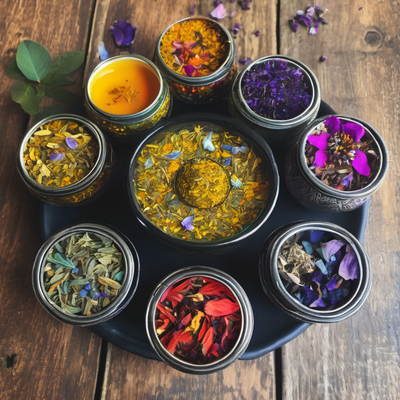
Discover the deep spiritual significance behind the vibrant red lotus flower in various cultures and traditions.
The red lotus flower, known for its vibrant and striking appearance, has a rich history and origin. It is believed to have originated in Southeast Asia, specifically in the countries of India, China, and Thailand. The flower grows in muddy and murky waters, yet it blossoms beautifully, symbolizing purity and enlightenment.
In ancient times, the red lotus flower was highly regarded and revered for its beauty and spiritual significance. It was often associated with various deities and spiritual figures in different cultures. The origins of the red lotus flower can be traced back thousands of years, and its symbolism has evolved over time.
The red lotus flower holds great symbolism in different cultures around the world. In Chinese culture, it is considered a symbol of love, passion, and good fortune. It is often associated with the goddess of mercy, Guanyin, and is believed to bring blessings and harmonious relationships.
In Hinduism, the red lotus flower represents the goddess of wealth and prosperity, Lakshmi. It is a sacred symbol of purity, fertility, and beauty. The flower is often depicted in Hindu mythology and is associated with various gods and goddesses.
In Tibetan Buddhism, the red lotus flower symbolizes the highest state of enlightenment. It represents the heart and is associated with compassion, love, and spiritual growth. The petals of the red lotus are believed to symbolize the noble qualities of the Buddha and his teachings.
In Buddhism, the red lotus flower holds deep spiritual significance. It is often used as a symbol of purity, spiritual awakening, and enlightenment. The red lotus is associated with the highest state of consciousness and represents the attainment of nirvana.
The red lotus is also linked to the concept of the lotus sutra, a sacred scripture in Mahayana Buddhism. The lotus sutra teaches the importance of compassion, wisdom, and the interconnectedness of all beings. The red lotus flower serves as a reminder of these teachings and encourages practitioners to cultivate these qualities in their spiritual journey.
In Hinduism, the red lotus flower holds great significance and is associated with various gods and goddesses. It is often depicted in Hindu art and is considered a sacred symbol of purity, beauty, and spirituality.
The red lotus is particularly revered as the flower of the goddess Lakshmi, who is the goddess of wealth and prosperity. It is believed that offering red lotus flowers to Lakshmi can bring blessings of abundance and good fortune. The flower is also associated with other deities such as Saraswati, the goddess of knowledge, and Brahma, the creator god.
The red lotus flower is not only revered for its spiritual significance but also for its meditative practices and healing properties. In meditation, the red lotus is often visualized as a symbol of inner peace, tranquillity, and harmony.
The vibrant red colour of the lotus is believed to stimulate the root chakra, which is associated with grounding, stability, and vitality. Meditating on the red lotus can help in balancing this energy centre and promoting a sense of security and stability.
In traditional medicine, the red lotus flower is used for its various healing properties. It is believed to have antioxidant, anti-inflammatory, and detoxifying effects. The flower is often used in herbal remedies to promote overall well-being and vitality.